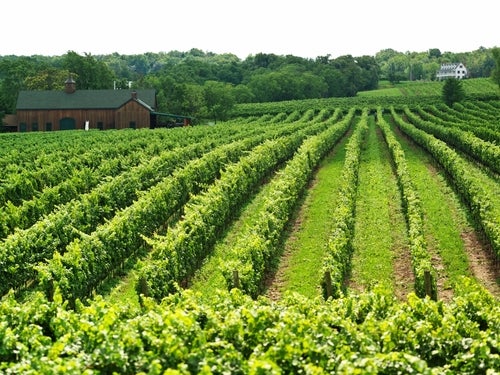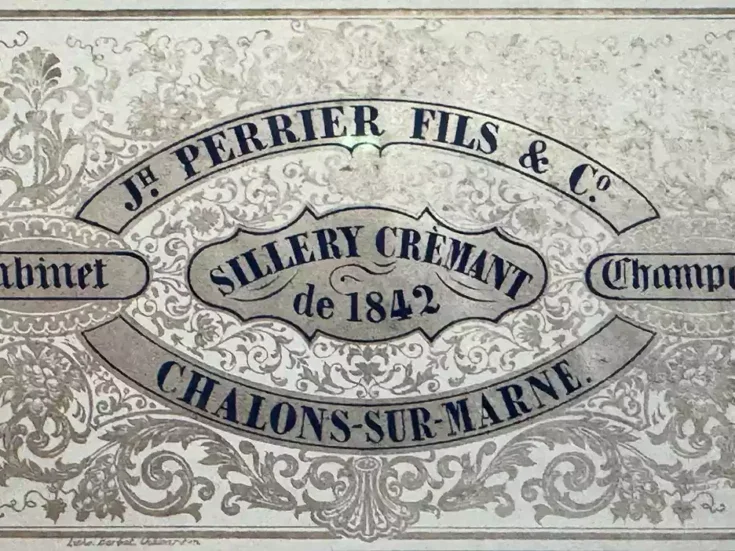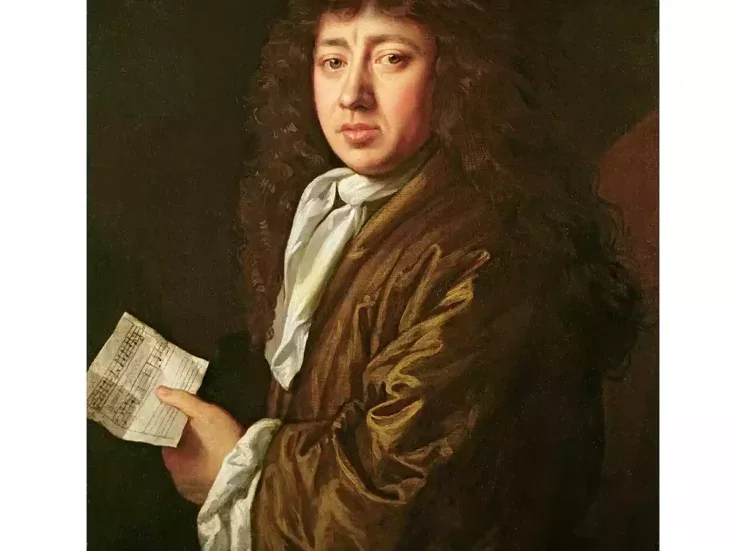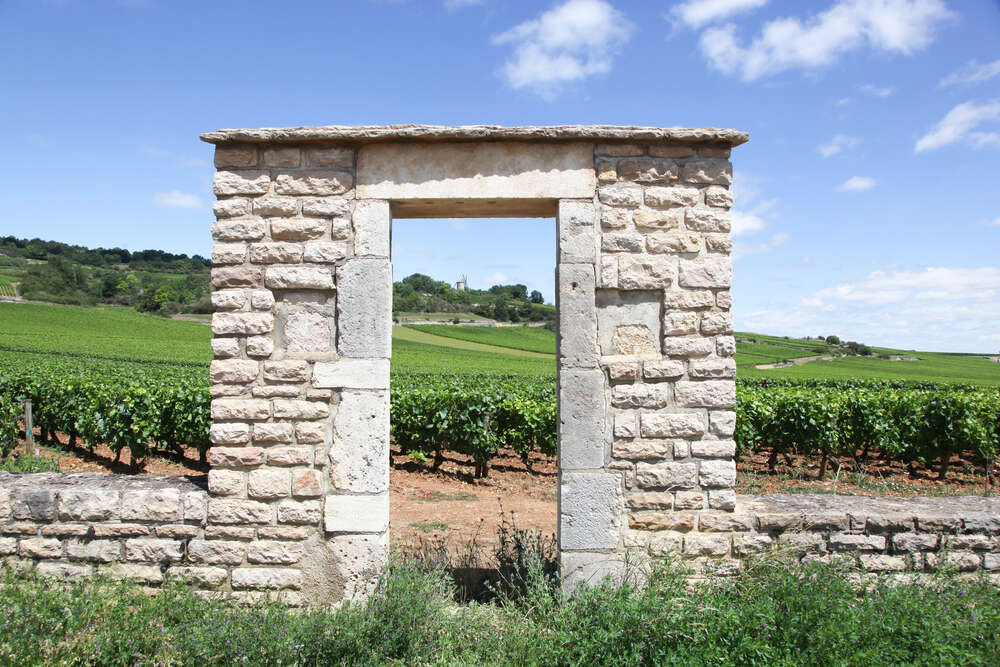
Sarah Marsh MW revisits the 2014 white Burgundy vintage. After tasting a range of top bottles from the Côte d’Or, she finds a vintage that remains as stylish as ever, if perhaps not one for the long haul.
On a sunny summer’s morning I tasted through 27 samples of 2014 white Burgundy from the Côte d’Or. Having diligently written my notes, I popped the bottles back in the fridge and re-tasted later in the day, this time blind. I repeated the exercise over the next few days weeding out wines as they wilted until I was left with three and ultimately two front runners, which, as you would hope were grand cru.
A single tasting is a harsh snap judgement, not really representative of the way a bottle of wine would be experienced as it unfolds over the course of a meal. Tasting the following day gave more of a sense of this, and as the days wore on, the longevity of the wine was tested. In between tastings, the wine was pumped out using a simple hand pump to extract the oxygen and was kept cold.
The bottles had been sent directly from the Burgundy producers’ cellars, often from their personal reserves, so should have all been in tip-top condition. My retrospective tastings are designed to encourage wine lovers to allow their Burgundy time to mature and fulfil its potential. I invite fellow wine writers, so they can also spread the word. Too much wine, worthy of ageing, is scoffed within a couple of years and the producers’ generosity reflects their wish to challenge this. For those readers who wisely tuck away bottles for a while, such tastings show how the vintage is evolving.
With six or seven years in bottle it seemed a good moment to assess how the 2014 is travelling and whether it has followed through on our high expectations.
2014 white Burgundy: An exceptional vintage?
As most readers will be aware, 2014 was heralded as an exceptional vintage for white Burgundy. Exceptional for the high quality, but equally for the consistency of both quality and style across the villages. Often there is a divergence in style between early and later harvesting, or some places may stand apart as a result of a particular weather event.
However in 2014 the season was uneventful with the exception of a spectacular hail storm on the 28th June. This cut a swath across Beaune, Meursault premiers crus, Monthélie, and Auxey-Duresses and dramatically affected yields, but quality was unaffected as it struck before veraison.
It was an easy season with a warm and sunny spring promoting a good and slightly early flowering. A pretty decent summer with sufficient sun in June and July followed. August was cooler and rather rainy, but a lovely warm September ripened the fruit nicely, provided some concentration, and the vintage was harvested in good conditions from the 12th. The fruit was healthy so there was no pressure to harvest and the growers were free to pick at the optimum moment.
When I visited Burgundy in June 2015 to taste the vintage from barrel I described it as, “Poised. An elegant style with an excellent balance of fresh acidity and perfectly ripened fruit. Charming. Nothing in excess. The texture is silky and the mineral terroir are quite clearly exposed. A deceptively simple style. Deceptive, for the easy harmony on the palate belies a very well balanced style – nicely ripened with good concentration, but not too rich, giving a medium body, which is neither too full or too slight and is balanced with freshness. The impression of concentration without excessive richness. The warm acidity sits well in the wine. They have energy and intensity and are instantly at ease. It has good intensity in the mid palate and precision at the end.”
In recent vintages we have become accustomed to more obvious wines with concentration and high degrees, while 2014 is more classic Burgundy. The grapes were picked with potential alcohol of 11.5% up to 13% for grand cru, so most producers tweaked with sugar for that extra 0.5%, which was apparent from the ABVs on the bottles in this tasting. The acidity is nice and fresh, but not as high as 2013. Nor does it have the lactic character of a colder vintage.
2014 was not a vintage of extremes. It was not too hot or too cold, but happily lay somewhere in between.
With some bottle age I find 2014 as stylish as ever. It lives up to expectations. It is an haut couture vintage. Simple and beautifully constructed.
However there is a caveat. The consistency, so attractive in the pre-bottling days, was questionable in this line up. While there were some superb wines, four of the 14 premiers crus from Meursault, Chassagne, and Puligny were showing oxidative characters, well before they should. I had a second bottle of one of these wines and this was considerably better. Another may have been a storage issue as it was was the only bottle in the tasting which came from an importer and not from the producer’s own cellar.
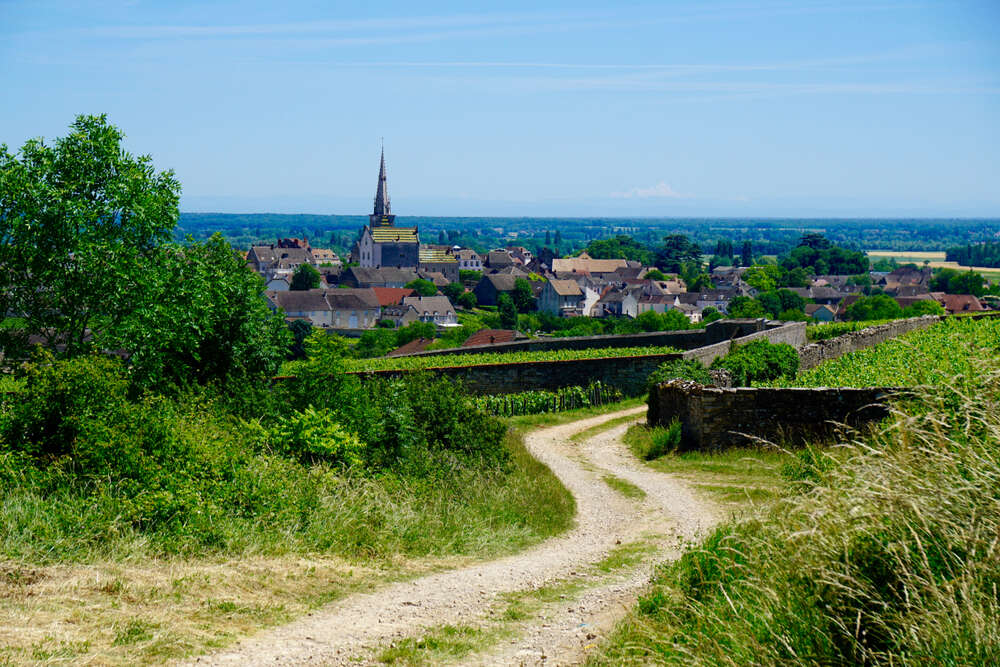
A range of appellations
The tasting represented a good range of appellations which included a few wines from the smaller villages on the Côte d’Or; bottles from Maranges, Santenay, and Saint Aubin from Domaines Chevrot and Lamy-Pillot. It was certainly time to drink these. They are fully mature. Even the premiers crus need drinking up. I liked Lamy-Pillot’s Saint-Aubin, Les Pucelles which is quite plump and spicy and flecked with notes of cinnamon and coffee, while Domaine Chevrot, Maranges 1er Cru Fussière Blanc, a very light wine from young vines, clearly reflects the steep, stony terroir in its linear line and nervy energy.
Bottling in magnum certainly delays the evolution. A magnum of Domaine Patrick Javillier Meursault Les Tillets, a village parcel high on the slope, has sea-breeze freshness. It is streamlined and still floral with only a hint of evolution in the aroma of warm hay and roasted almonds on the palate. From the principal three villages, there is plenty of time for village wine bottled in magnum, especially from best placed lieux-dits, but village wines in a regular bottles need drinking now.
We have expectations of longevity based on appellation, on the terroir, but the choices made in the winery when preparing for bottling will also affect the way the wines evolve. It is not only bottling in larger formats which influences ageing potential. This tasting highlighted a few other considerations, including levels of free sulfur and CO2 at bottling and the choice of closure.
I find the backlash against SO2 frustrating. Of course we don’t want to use too much of any chemical, but sulfur is a fundamental tool which can be used judicially from the vineyard to the winery. I am fed up of tasting so called natural wines which have no sulphur at bottling and are plainly oxidized.
This is particularly exasperating when producers are diligently working organically and biodynamically. (I don’t have Burgundy in mind as few have ventured this far). I would rather have a wine which has more free sulfur at bottling than is strictly necessary than one with none or too little. Domaine Jacques Carillon wines have a generous 50mg/l of free sulfur, which makes them pretty indestructible.
Jacques Carillons’s village Puligny stayed fresh longer than many well placed premiers crus, while his Premier Cru Perrières just went on and on. Five days later and I polished off the bottle, which was still punchy. You can be confident Domaine Jacques Carillon wines will evolve, but don’t open the premier crus yet and certainly decant them if you do.
I was delighted to see Diam closures in this tasting from Bouchard, Olivier Leflaive, Montille, Fernand & Laurent Pillot, and Domaine Leflaive. Some people object to Diam on the basis that it has a smell they dislike. I sometimes get a whiff of nettle, a hint of mint, but frankly I quite like this, if indeed it is the Diam, while I certainly object to a corked or oxidized bottle.
One domaine had the misfortune to send a corked village wine and a premier cru in poor condition and the duplicates were no better. It was their first year making wine having reclaimed their vineyards. Maybe they fell foul of an unscrupulous cork supplier.
Another domaine had one corked bottle, but the second was fine. and another had one oxidized bottle while the second was fresh. How disappointing for the customer to open a dud bottle. When I started winemaking I didn’t want to take that risk and bottled my Meursault under Diam. No brainer. But closures are only part of the solution to ward off oxygen ingress and ageing. There were two wines under diam which faded more quickly than expected.
Carbon dioxide is another useful tool. Handy for injecting energy and freshness into modest red wines, but also in preserving whites. I couldn’t help noticing that Olivier Leflaive’s wines practically popped their corks with gas. Actually they popped their Diams. Given the reductive quality of Diam, that CO2 is slow to go. Double protection. Franck Grux says it’s not unusual for him to bottle at 900 to 1100 mg per litre, always natural CO2 as he conserves a high level during the ageing. Olivier Leflaive’s bottles endured the fridge test particularly well.
As did the wines from Bouchard where Frédéric Webber uses from 800-900mg/l. Webber likes to push for full ripeness in Chardonnay and picked three days later than Pinot. There were so few berries on the bunches from parcels affected by hail, that he de-stemmed to avoid excess extraction from the stems in the press.
When tasting the wines from barrel (and at the various en-primer tastings) it is just so important to bear in mind that these are not finished wines. Most white wines will be racked into stainless steel and left on fine lees to settle for several months before the bottling during which time the wine will become more precise. And much can be done in the final stages to polish the wine before bottling by fining with a little caseine and bentonite. It can be particularly useful to sharpen wine in a richer vintage or smooth a tannic edge from oak or in 2014 maybe from the grape. However 2014 was crystalline from barrel so it is really just a final polish to make it more precise.
The self-depreciating Grux often bemoans the vintage during the barrel ageing when we taste together, even one as good as 2014, but low and behold with a little primp to finish—voilà, all is well.
2014 white Burgundy: A simple vintage to make
In general there was little to do in 2014, a simple vintage to make, age and finish. The only small issue were the skins which were usually thick and tough. This was not just in the villages hit by hail, where the hail would have delayed development of the grape, but many producers commented at the time on the high skin to juice ratio. There was widespread millerandage.
To extract the juice it was either necessary to press harder and/or longer or to crush the berry first. Crushing a technique beloved of growers selling juice to négociant, can be used to maximize the yield with ever decreasing quality, or it can be employed in a qualitative manner, when it is more usually referred to as foulage.
Foulage entails lightly breaking the skins, which can permit a gentler press and possibly finer lees, depending on how it is used. It can make a wine which is more pure and fruit driven. Alternatively the producer may pursue a measure of phenolic bite, something I quite like and which has certainly become more popular. Not only can it add beneficially to the structure but it’s perfectly reasonable to argue it can enhance the expression of terroir by lightly extracting from the skin of the grape. After all the the skin holds the signature of the terroir.
Brian Sieve, winemaker at Domaine de Montille, decided to use some foulage for the first time in 2014. Montille, Puligny-Montrachet Premier Cru Cailleret was a stand out wine in the summer tastings from barrel, with its firm and austere character. It still rates highly, although it didn’t withstand the fridge test quite as well as expected.
It was necessary to be careful with new oak in 2014 as it could easily dominate. There were a few wines which showed some excess. Thank goodness that over the past few years the retreat from new oak has continued. Domaine Fontaine-Gagnard Bâtard-Montrachet was still very oaky and demanded more time in bottle to integrate.
I expected the top premiers crus might need more time in bottle. Not so. Several wines politely requested to be left alone for a year or two, most were in place to start drinking and decanting the former would probably suffice. There was never anything to resolve in this vintage, no excess fat to slim down or awkward acidity to integrate and this harmony make the vintage both harmonious and accessible.
I would start drinking the premiers crus now and over the next six or seven years with the high performers and the best grands crus a little longer. With the aforementioned exceptions, the vintage seems to be developing gracefully with many of the samples in this tasting still in the fruit and flower zone of relatively youthful wine, sliding into more secondary characters and showing more development on nose than palate.
However, based on this tasing, it does not seem to be a vintage for extensive ageing and I would err on the side of caution. I think there are more robust vintages which could last longer. I had premier cru 2015s and 2016s last year which hung on for a week or more in the fridge. Moreover they came from merchants and not directly from the producers.
Most wine did not last past day two. After three days, Domaine Leflaive, Puligny-Montrachet Pucelles and Montillle’s Puligny-Montrachet Cailleret and Chanson’s Corton-Vergennes faded. Bouchard’s Corton-Charlegmagne fell away on day four.
By day five I was left with Olivier Leflaive, Chassagne-Montrachet Clos St-Marc (quite remarkable I think) which was the next to fall, followed by Bouchard Puligny-Montrachet Folatières.
On day six I was left with Carillon’s indestructible Puligny-Montrachet Perrières, while Bouchard’s Chevalier and Fontaine-Gagnard Bâtard-Montrachet were also still going strong and lasted further day.
There is one last and significant point to mention. Terroir. This is a vintage of lucid, crisp terroir expression. Although there is concentration in 2014 the texture is light and the slimmer textured vintage are always most translucent to the terroir.
The following captured the essence of their terroir:
Domaine Fernand and Laurent Pillot, Chassagne Montrachet, 1er Cru Vergers
Immediately engaging fruity wine which ripples on a light and silky line.
Chateau de Meursault, Meursault Premier Cru Charmes
Generous, rounded buttery palate underscored with lime-citrus freshness.
Domaine Olivier Leflaive Meursault, Premier Cru Sous le Dos d’Ane
Nervous and light, crisply edged and high wired.
Domaine Génot-Boulanger, Meursault Premier Cru Bouchères
Spicy, ample and rich with a cotton wool airiness and creamy freshness.
Domaine Bouchard Pere & Fils, Meursault Premier Cru Genevrières
Pink and floral; delicate and dancing to a shimmering saline, but succulent, finish. Precise.
Domaine Leflaive, Puligny-Montrachet, Premier Les Pucelles
Gorgeous silky texture and haunting rose petal perfume. Lucid, fluid and graceful.
Domaine de Montille, Puligny-Montrachet, Premier Cru, Le Cailleret
Vigorous, cold and powerful with savoury austerity and a steely finish.
Domaine Chanson, Corton Vergennes Grand Cru
Compact, firm and vital. Wet stone mineral smoothness.
Domaine Bouchard Pere & Fils Corton-Charlemagne Grand Cru
Sharply edged and focused, the linear palate has layers of shale-like minerals and a sapid finish.
But for me it is Domaine Olivier Leflaive’s, pure, elegant, and poised Folatières which most eloquently expresses this refined and, in so many ways, exceptional vintage.
The survivors: Top 2014 white Burgundy
The following tasting notes were taken on day five for the premier crus and day six for the grand crus.
Domaine Olivier Leflaive, Chassagne-Montrachet 1er Cru Clos St Marc
This lasted very well indeed, becoming more refined as it evolved. At this point the bouquet was more fragile but delightful with hints of fresh ginger and roasted almonds, flowers and hay. Delicate on the palate too, where it was becoming leaner and lighter, but fresh and pure with sappy notes and a salty line. Happily whistles home on the finish. 93 From 2024-30
Domaine Jacques Carillon, Puligny-Montrachet, 1er Cru Les Perrières
The fresh and brisk aroma has melted into gingerbread richness with toasted almonds and nutmeg. The straight but broad palate is still firm, but feels less compact. It still has grunt, but the grip is easing. The dark and earthy character has acquired umami and mocha notes. You still sense the muscle from the clay and there is plenty of vigour on the finish. 93/4 From 2025-30+
Domaine Olivier Leflaive, Puligny-Montrachet 1er Cru Les Folatières
13%
I really liked this wine. The citrus aromas have developed a honeyed edge and are joined by spicy notes of toasted cumin and fennel seeds. The burbling energy is now calmer as it ripples with silky succulence on streamlined palate. Intense, but delicate, pure and racy. This comes from a high parcel within Folatières and eloquently articulates the terroir. The refined finish is all sea-breeze freshness and oyster-shell. Precise and poised. 96 From 2024-30
Domaine Fontaine-Gagnard, Bâtard-Montrachet Grand Cru
Scrumptious crystallised fruit on the nose, ginger, lychee and a hint of rosewater. As the oak integrates, it’s become quite exotic, but is still so youthful. The palate is opulent and swaggers. There is creamy textural sweetness and the citrus and stone notes are now moving into truffle. It’s very Bâtard in its volume and glistening muscle. There is proper grand cru intensity and it powers home on the impressive finish with great vitality. 97 From 2024-30+
Domaine Bouchard Pere & Fils, Chevalier Grand Cru
Over the days the bouquet has become more glorious. It is creamy and lusciously golden; the perfume of peaches combines with roasted chestnuts. The generous palate is honeyed upfront and it flows smooth and seductive. Rippling in a debonaire fashion. It is both expressive and restrained. The fruit concentration shows in the sweetness of dried apricots, combining with more delicate scented notes of dried rose petal. It stretches into a sustained, pure, and mineral finish. 98 From 2024-30+

